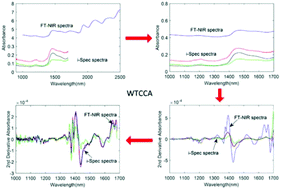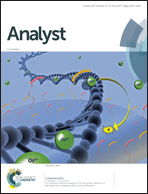Calibration transfer of near-infrared spectroscopy by canonical correlation analysis coupled with wavelet transform
Abstract
Calibration model transfer has played a prominent role in the practical application of NIR spectral analysis. The change of instruments and sample physical states may lead to variation of the NIR spectrum, which results in the applicability of the model in judicatory practice being unsatisfactory. Therefore, a transfer for the calibration model considering both the variation of instruments and sample states is a necessity to ensure its availability. In this paper, a novel approach, namely canonical correlation analysis coupled with wavelet transform (WTCCA), was proposed for calibration transfer between two near infrared spectrometers (a portable and a laboratory instrument), and simultaneously, among three physical states (tobacco powder, tobacco filament and intact leaf) to determine the content of total sugars, reducing sugars, and nicotine in tobacco leaf samples, respectively. Wavelet transform (WT) is introduced to reduce noise and deduct background shifts from the spectra by compression, and then, calibration transfer by canonical correlation analysis (CTCCA) extracts the compressed spectral similarities using canonical scores for spectra correction. Three similar standardization algorithms, including piecewise direct standardization (PDS), piecewise direct standardization with wavelet transform (WTPDS), and CTCCA were compared with WTCCA to evaluate its relative performance. The obtained results showed that the employment of WTCCA yielded the lowest root mean standard error of prediction (RMSEP) on the three analytes in three physical states. For the tobacco powder dataset, the RMSEP values had a reduction of 25.83%, 13.96%, and 14.22% compared with the values of direct prediction without spectra transfer, respectively. For the tobacco filament dataset, the corresponding values were decreased by 18.06%, 14.90%, and 13.61% and for the intact leaf dataset, the values had dropped by 10.70%, 18.21%, and 28.21%, respectively. In summary, the comprehensive investigation carried out in the present work shows that WTCCA is very appropriate for correcting the variations caused by the change of machines and sample states. Furthermore, WTCCA is a promising calibration transfer method which can be recommended for on-line/in-line application.



 Please wait while we load your content...
Please wait while we load your content...